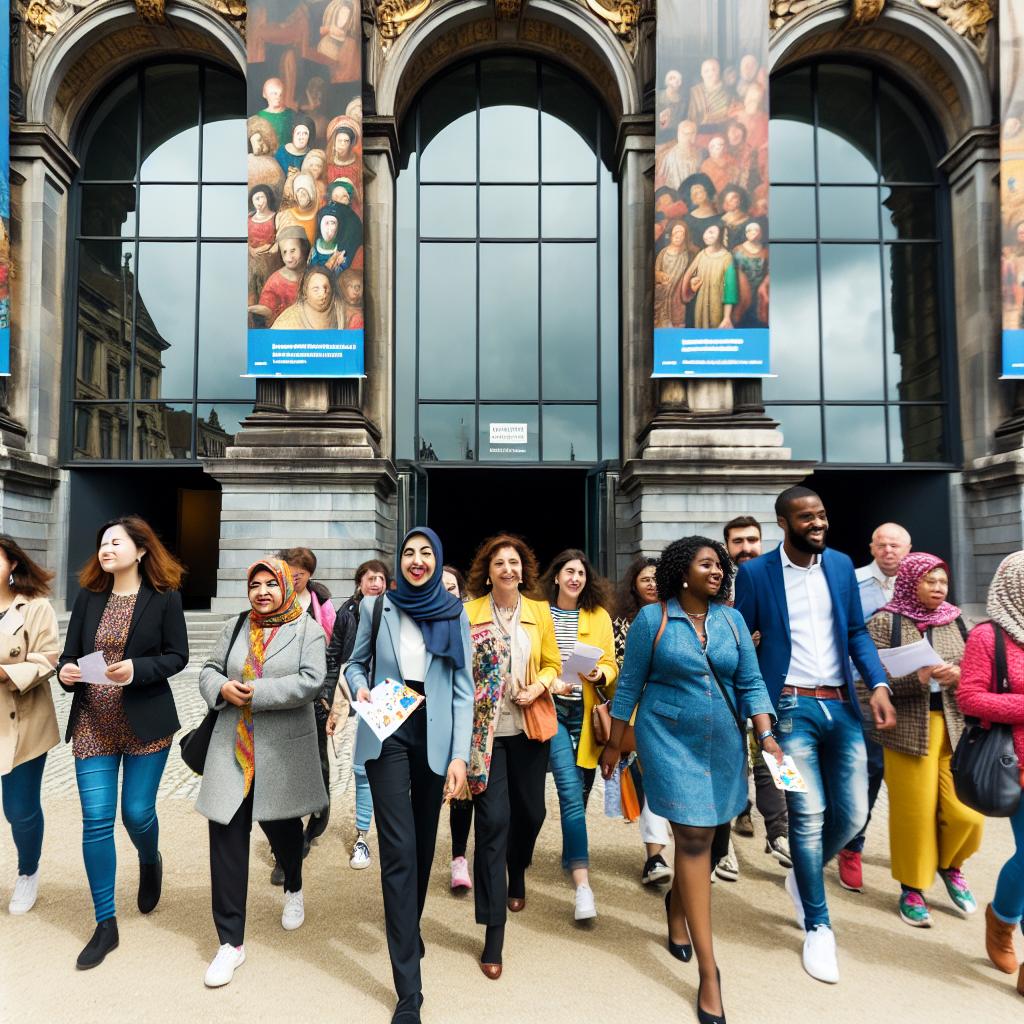Introduction to Cultural Exchange in European Museums
European museums are integral to facilitating cultural exchange on a global scale. They serve as repositories of historical art and artefacts and as lively cultural hubs where meaningful interactions take place. Through comprehensive collections and immersive programming, these institutions cultivate a space where individuals can gain a deeper appreciation of cultural diversity and engage in dialogue across cultural boundaries. By providing visitors with access to rich cultural narratives, museums play a vital role in promoting international understanding and cooperation.
Curated Exhibitions
Curated exhibitions in European museums are meticulously crafted to offer visitors a window into global cultures. These exhibitions are typically the result of partnerships with international museums and cultural institutions, bringing global stories to local audiences. For instance, collaborations by the British Museum exemplify the potential of these initiatives. By working with partners from various countries, the museum is able to present exhibitions that showcase art and history from around the world, allowing visitors to experience a diversity of narratives without having to leave their city.
An example of this approach is an exhibition at the British Museum that focuses on South American civilizations. Such exhibitions not only showcase artefacts but also strive to convey the philosophical and social contexts of these cultures. This includes the values, beliefs, and historical milestones that have shaped these societies. It cultivates a nuanced understanding of how intertwined the global narrative is, helping to highlight commonalities and respect for differences.
Collaborative Programs
Collaborative programs are another effective strategy employed by museums to heighten cultural exchange. These programs often involve cooperative efforts in research, joint exhibitions, and exchanges of staff between institutions in different countries. Through these partnerships, museums enhance their collections and programming and contribute to the preservation and dissemination of cultural knowledge.
One prominent partnership is between the Louvre in Paris and the High Museum of Art in Atlanta. This collaboration includes a series of rotational exhibitions that allow art and artefacts to be presented to audiences on both sides of the Atlantic. By moving exhibitions between locations, these museums extend cultural exchanges beyond borders, offering audiences unique insight into foreign art and history.
What’s more, collaborative programs often include research projects. Museums join forces with international scholars to explore cross-cultural influences, conducting studies that highlight shared histories and hybrid forms of art and culture. This collaborative research enriches the understanding of culture as a dynamic and interconnected phenomenon, providing a critical perspective on globalization’s impact on tradition and modernity.
Workshops and Educational Initiatives
Workshops and educational initiatives serve as vital tools in educating the public about global cultures. European museums frequently organize such programs aimed at both younger and more mature audiences, facilitating learning opportunities that span a myriad of cultural themes. These hands-on activities are crafted to engage participants actively, making learning an interactive experience.
Take, for example, the Rijksmuseum in Amsterdam. This institution not only emphasizes Dutch cultural history but also integrates elements of global art and history into its educational offerings. Workshops might include topics such as the influence of Asian porcelain on Dutch ceramics, encouraging participants to explore the evolution of art materials and styles through direct engagement with the artefacts.
These programs also help audience members to recognize and appreciate cultural nuances and historical contexts. Through storytelling, practical activities, and informal discussions, museums encourage empathy and curiosity, inviting individuals to step into someone else’s shoes. By doing so, they forge deeper connections, enabling audiences to relate personally to distant cultures and histories.
Digital Platforms and Virtual Exhibitions
The digital era has ushered in a new dimension of cultural exchange in the museum world. European museums consciously harness modern technology to offer virtual exhibitions, thereby broadening access to cultural goods and engaging with a truly global audience.
Virtual exhibitions enable the display of varied collections from multiple institutions worldwide, offering a robust overview of international cultural heritage. Digital platforms include interactive features such as virtual tours, quizzes, and multimedia content, enhancing the experience of viewing cultural artefacts from a distance. For instance, the Uffizi Galleries in Florence have succeeded in making their exceptional collection accessible to everyone, regardless of their geographical location.
This approach provides novel opportunities for cultural appreciation, enabling people who might never have the chance to visit in person to experience important works of art and historical artefacts. It also allows for flexible learning, as visitors can access these resources at their own convenience.
Events and Festivals
Events and festivals organized by museums serve as an extension of their cultural exchange efforts. These vibrant occasions offer an immersive way to experience different cultures and often feature music, dance, lectures, and food that reflect international traditions.
For instance, the Museum of European Cultures in Berlin hosts annual festivals that bring diverse European traditions to life. These festivals allow for a celebration of cultural heritage, with events designed to illustrate the complexities and beauties of various European customs. Featuring performers from different cultural backgrounds, these festivals underscore the harmonious interactions possible among diverse communities.
Moreover, events typically include sessions designed to encourage dialogue between cultures, such as panel discussions and interactive workshops. This encourages a deeper level of engagement among participants, prompting them to explore the shared values and distinct practices that define cultures around the world.
Conclusion
In summary, European museums play an indispensable role in promoting cultural exchange. Through meticulously curated exhibitions, collaborative programming, educational workshops, and innovative digital strategies, these institutions foster intercultural dialogue and appreciation. Furthermore, lively events and festivals invite personal engagement with global traditions, enabling visitors to forge connections and gain insight into diverse cultural narratives. As they continue to innovate and evolve, European museums remain central in bridging cultural divides and nurturing a more interconnected and understanding global community.

